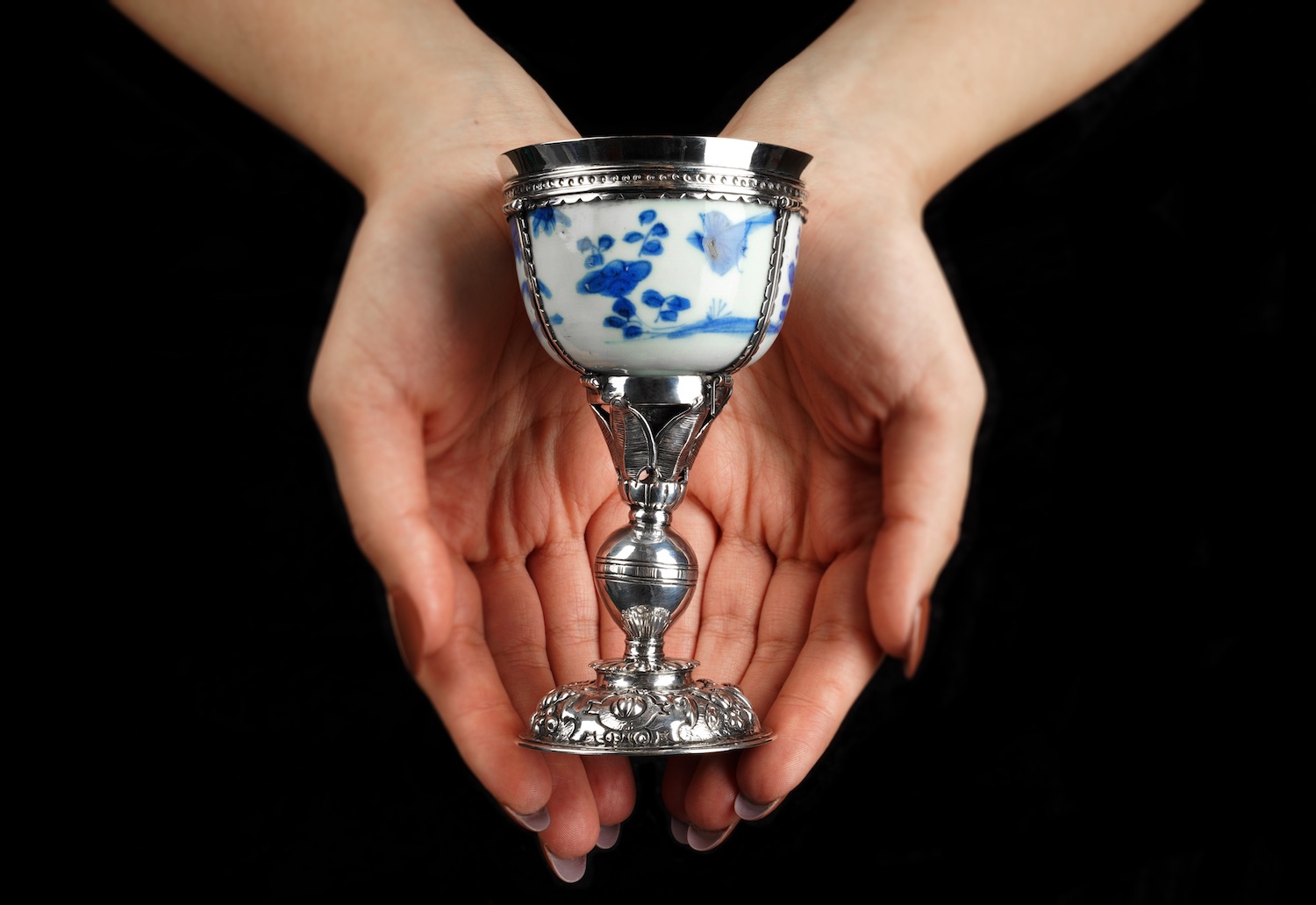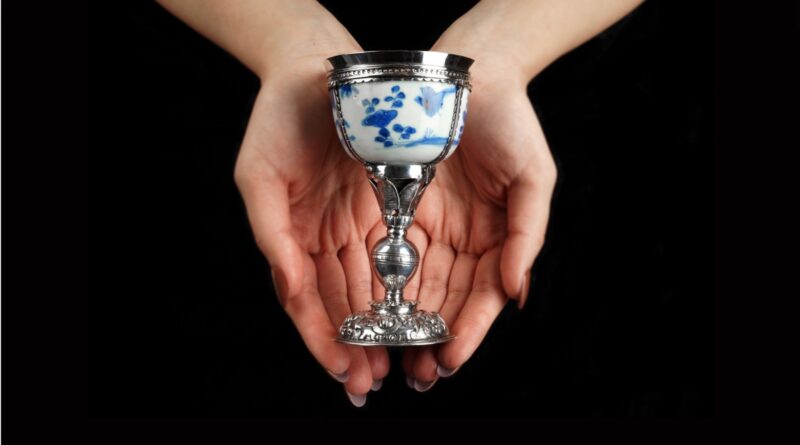Elizabethan de Pinna cup set to shine
An Elizabethan silver and porcelain goblet carries a guide of £6,000-8,000 at Chiswick Auctions on June 11. The de Pinna cup, dating from c.1580-1600, comes for sale following an examination by a committee of experts and two episodes of testing at Goldsmiths Hall in London.
This is the third time this piece, fashioned by an English goldsmith using a tea bowl imported from Ming China, has been prepared for sale. It was previously withdrawn following a disparity in opinion over its date. The decision on each occasion was to subject the cup to scientific testing.

Chiswick Auctions’ head of department John Rogers is now confident the item is 16th century.
The committee in June 2023 stating that the cup was “an amalgam of different elements, some of which may be older than others. The consensus of the committee was that the cup was in all probability an amalgam of different elements, some of which may be older than others. The view was that in its present form it is most unlikely to date from the late sixteenth or early seventeenth century.” The cup has not been submitted to the committee a second time.
The first three metal samples taken in August 2023 were compared against a database of results of genuine English pieces of silver at Goldsmiths Hall and found to have a probability of 96.33% for the date range 1500- 1600, with 0% after 1697. A second series of samples from two different places on the cup were taken in May 2024. These were again found to have a probability of 99% for the date range 1500-1600.
It was early in 2023 that John Rogers received an image of the 5in (13cm) high goblet via email. It combines a Kraak blue and white porcelain tea bowl from the reign of the Wanli emperor (1573-1620) with a strapwork and openwork silver mount of a type that was fashionable from c.1580-1600.
The full history of this piece is unknown. However, it comes by descent from Arthur Abraham Clifford De Pinna (1889-1947), a furniture dealer in Piccadilly whose cousin was the London dealer in Oriental porcelain Alfred Samson de Pinna (1868-1963). It shares the same provenance history as a Ming blue and white porcelain ‘canteen bottle’ now in the Smithsonian Museum which was sold by the vendor’s family through Sotheby’s in 1957.
It is exceptionally rare for an item of Elizabethan silver mounted porcelain to have remained in private ownership for over a century and not be published.
At a time when Europeans poured and drank from relatively crude stonewares and earthenwares, snow white porcelain imported from Chinese was hugely expensive in 16th-century Europe. The handful of pieces that made the journey to England were held in the utmost esteem and often mounted in gold and silver in much the same way as other ‘exotics’ such as coconuts, nautilus shells or Iznik pottery. Very few pieces have survived intact.
Although unmarked, the de Pinna cup likely post-dates by a decade or so the earliest dated piece of English silver mounted Chinese porcelain (the Lennard Cup of 1569 in the British Museum) and is contemporary with the four items of silver-mounted Wanli porcelain once owned by Sir Walter Raleigh and now in the Metropolitan Museum of Art.


